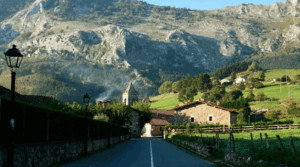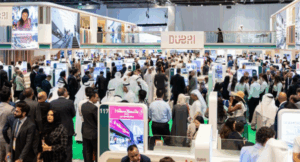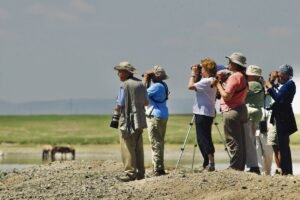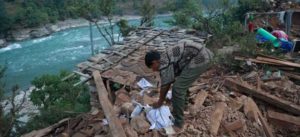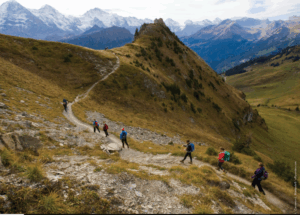Tackling insurance fraud in Nepal
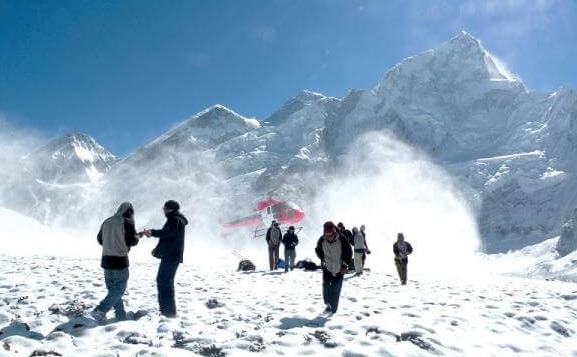
By Danny Kaine —
Systematic fraud in Nepal is estimated to have cost insurers millions of dollars and has allegedly caused the deaths of a number of travellers. Traveller Assist, a medical assistance and cost containment company, believes it has uncovered a network of fraudulent activity that involves a number of trekking operators, helicopter companies and even hospitals.
As part of these activities, travellers have become commodities and are traded as valuable assets. The fraudsters have preferred insurance brands that are known to pay invoices quickly and without question, and travellers holding those policies have therefore become valuable assets.
In a typical scenario, a traveller might complain of a minor ailment while trekking in Nepal’s mountain region. The trekking guide would then send a message to a helicopter charter company, and a commission would be agreed upon (based on their perceived value of the particular insurer covering the traveller). In turn, the helicopter charter company would message hospitals to negotiate a commission, with the highest bidder ‘winning’ the traveller. Insurers are then presented with inflated helicopter invoices and medical bills, and often left with no recourse, as the rescue and so-called treatment had already taken place.
Trawling the evidence
During the investigation, Traveller Assist was granted access to 1,000 invoices from prior claims that had happened over a two-year period in Nepal. We were able to cross-reference these claims with over 300 of our own cases from 2017-18, and this allowed us to build a comprehensive intelligence picture that revealed, over and over, the same trekking operators, heli-charter companies and hospitals.
These companies became the main focus of the investigation, and ultimately led to three sting operations in the country where crucial evidence against these operators was recorded and documented, and a 200-page report was handed over to the Ministry of Law and Justice in Nepal, and the Ministry of Culture, Tourism and Civil Aviation.
As this was happening, we simultaneously brokered an agreement between three insurance underwriters to give leverage with the Government of Nepal. The reason for this was that the Ministries refused to investigate the fraud claims, despite being presented with evidence of corruption. This resulted in a very public ultimatum to the Government that was broadcast on major news channels, and published in over 30 newspapers and magazines around the world, in 13 languages. The ultimatum was that if action was not taken, insurers would stop issuing policies for travellers visiting Nepal, which would likely result in millions of dollars in loss for the Nepalese government.
Within 11 days of almost daily media interviews, a Ministry representative informed us that a taskforce was being formed to investigate the reports of fraud, and the Ministry requested that we do not comment to the media further until their investigation was complete. We complied, and within 30 days the Ministry had announced charges against every company in the report that we had presented to them. In addition, five other companies that the task force had found to be complicit in fraud against insurers were charged.
Trekking operators
There are over 3,000 licensed trekking companies registered in Nepal, and for many travellers, the trekking guide is the first point of contact in the event of sickness or injury. During the investigation, it was found that some trekking guides were making up to US$30,000 in commissions paid to them by heli-charter companies. It was also found that some trekking companies were purposely making their travellers sick by feeding them unrefrigerated chicken or adding baking soda to food, causing diarrhoea and vomiting.
Some trekking guides have also been known to make a call to an insurer, or send an email, to inform them of the ill or injured traveller, so that they can prove they informed the insurer, but then they will switch off their phone and blame poor signal connection so the insurer cannot call them back; all the while having another phone that they use to communicate with the helicopter company. In two documented cases, guides were found to have a signal jammer that would stop the travellers from using their phones and contacting their insurers. By the time the insurer has received the case notification, the traveller is often already in the air, on the way to a hospital.
Guides have also been known to hold travellers for longer, until a helicopter is available from a commission-paying company. This has resulted in sick and injured travellers being forced to stay overnight on the mountain, and in one case, resulted in the death of a traveller who was not provided with timely treatment.
From the investigation, it was also found that some trekking companies who charged less than $1,000 for a five-day trek were often the ones involved in fraudulent cases – they could afford to charge less for the trek because they knew they would make up the difference from the pending medical ‘rescues’. Unsuspecting travellers would set off on the trek of a lifetime, not knowing that they will never actually make it to their destination.
It was also these companies who would willingly take travellers to higher altitudes within 24 hours of arriving in the country, not allowing the travellers to acclimatise to the altitude, often resulting in symptoms of acute mountain sickness (AMS). It’s advised that travellers should acclimatise for at least five days upon arrival in Kathmandu, before embarking on an altitude trek. Symptoms of AMS usually develop between six and 24 hours after reaching altitudes of more than 3,000 metres (9,842 feet) above sea level. These symptoms can disappear by descending to a lower altitude of at least 500 metres (1,600 feet). An experienced and reputable trekking operator will descend with a traveller at the first signs of AMS. The fraudulent operators will either keep pushing the traveller, or immediately call for a helicopter.
Helicopter companies
It’s important to note that while there are over 20 helicopter companies registered in Nepal, only 10 actually own helicopters. The rest are heli-charter companies. This is the key to fully understanding the extent of the fraud that happens, and how it happens. For us to better understand it, we focused on the owners of each company, which led us to the promoters.
In every single case of fraud that we found, we narrowed it down to five helicopter charter companies. These companies act as umbrella organisations (promotors), and represent hundreds of trekking companies, and are typically aligned with one helicopter company and one hospital. This facilitates the flow of commissions between the organisations.
While there are five charter companies, two of them represent the same helicopter company and same hospital, and another two promote a different helicopter company and a different hospital. The fifth one is smaller, and represents less than 100 trekking operators, and promotes a smaller helicopter company and smaller hospital.
What we then found is that owners, or investors, of these three hospitals also own shares in, or have invested in, the same helicopter companies, same hospitals, and have also invested collectively in over 2,000 trekking companies. When all of the layers are peeled away, a majority of the money defrauded from insurers is being funnelled to a handful of business people, and in one case, a medical doctor.
Other questionable practices by heli-charter companies have included multiple travellers being loaded onto a helicopter, and then multiple claims being made for that one helicopter. In one particular case, seven claims of over $5,000 were made for one heli rescue, totalling almost $40,000, for a flight that should have cost less than $4,000.
Hospitals
Dishonest schemes involving travellers in Nepal don’t always involve a helicopter, but they almost always involve a hospital and, from the results of our investigation, it’s typically one of three hospitals who pay these commissions. In some cases up to $1,000, and not always to helicopter companies. Taxi drivers, hotel operators, and bar owners have also reported being paid commissions by hospitals to direct travellers to their facilities.
A common tactic used by at least two hospitals is to exaggerate medical symptoms, in some cases even convincing the traveller that they are sicker than they are. The difficulty with AMS is that when a traveller descends to a safer altitude, they start to recover very quickly, which makes it very difficult to prove that a related heli-rescue was unnecessary or that treatment was excessive.
Hospitals have also been known to hold travellers’ passports until the bill has been paid in full, causing the traveller to panic, and at times blame the insurer. We have also seen the traveller being held in the hospital for three days until their daily card payment limits are reached to pay the outstanding medical bill.
During our investigation, information also came to light that doctors at one private hospital were conducting surgical procedures on travellers that they are not qualified for, and this has resulted in at least two deaths, including one very recently that is currently under investigation by the Criminal Investigation Division of the Nepal Police.
Travellers
Some travellers have also been involved themselves in dubious practices in Nepal, being offered up to $750 to take a helicopter from the mountain back to Kathmandu, and then promised that after one night in a hospital, they will be transferred to a luxury hotel for a couple of nights until their flight home. For some travellers who have spent their savings travelling to Nepal and trekking to Everest base camp, the offer of being paid to take a helicopter back is far too tempting an offer.
Travellers are also being asked to lie and exaggerate their symptoms when speaking to their insurer. In some cases, being told exactly what to say by the trekking guide, and even by the hospital. The traveller becomes scared that their insurance won’t cover the costs and so, in some cases, they say exactly what they are told to.
Conclusion
Statistics released by the department of tourism in Nepal estimate that 20-per-cent more travellers arrived in the country this season (September to November) than last season, yet there have been 60-per-cent fewer helicopter rescues in the country during that time. At the time of writing, heli-rescue flights logged with the tower in Lukla are at just over 1,400, with 70 per cent of those being from one helicopter company. That same helicopter company is promoted by two of the largest heli-charter companies in Nepal, both of which have been charged with fraud, yet they are still operating.
While unnecessary heli-rescues have fallen significantly, this is not to say that fraud has stopped in the country. This season, our company has provided medical assistance for 123 cases in Nepal, 94 of which involved a helicopter; and in only six of those cases, we received extremely inflated invoices that we were able to negotiate down to reasonable amounts.
From 14 January 2019, Traveller Assist in partnership with the Ministry of Tourism will staff a kiosk at Kathmandu Airport to educate arriving travellers on how to avoid sickness and injury typical in those visiting the country, and what to do in case of emergency. Additionally, travellers will be able to rent local mobile phones and a text-enabled GPS that has an SOS button monitored by Traveller Assist’s local team. The aim of this proactive approach is to make Nepal safer for travellers and reduce insurance fraud.
The bottom line for insurers and assistance providers is to understand that by continuing to use ground agents, charter companies and hospitals in Nepal that have already been charged and named by the Government for fraud, and by accepting and paying over-inflated invoices, this is perpetuating the problem, making fraud more difficult to tackle for everyone. – itij.com
Danny Kaine is the Head of Assistance for Traveller Assist, a medical assistance and cost containment company specialising in Latin America, Nepal and parts of Africa. He is an ex-soldier and adventurer, with 20 years of experience in complex regions.
Courtesy : International Travel and Health Insurance Journal ( ITIJ)
Image : ITIJ / 2019


